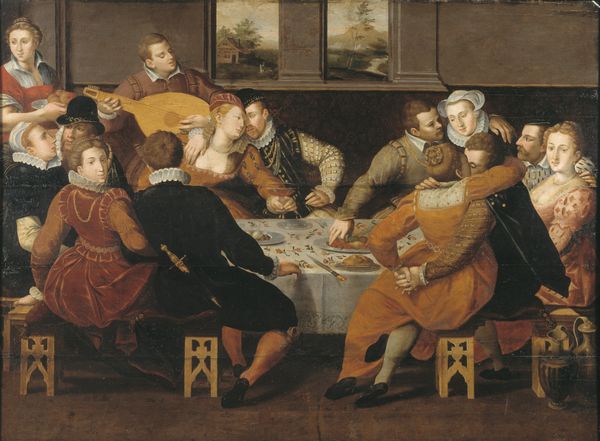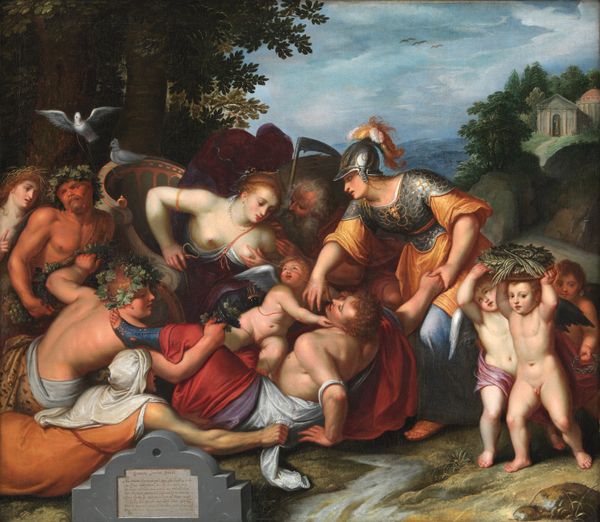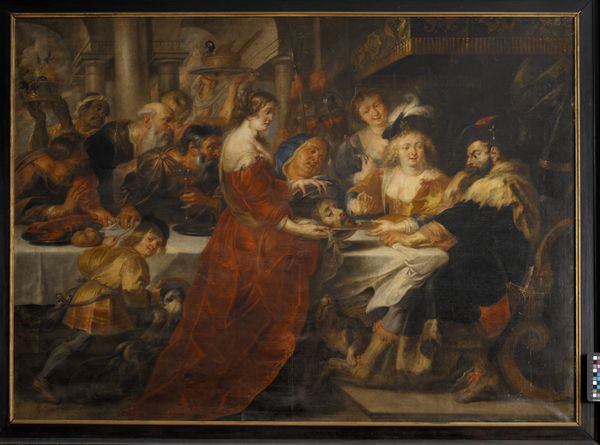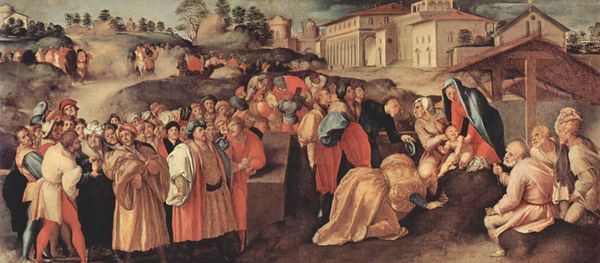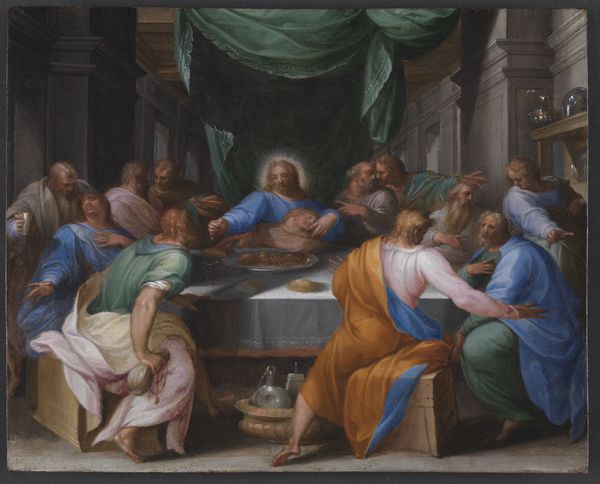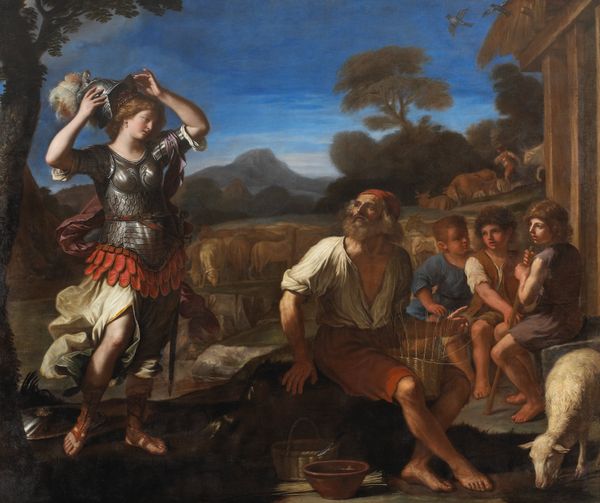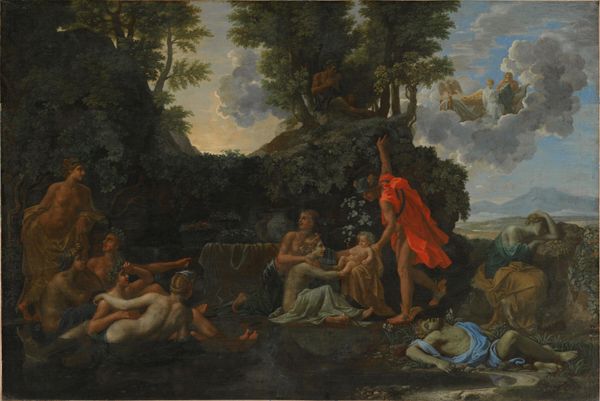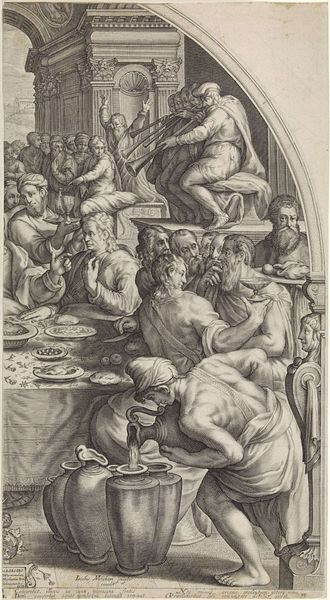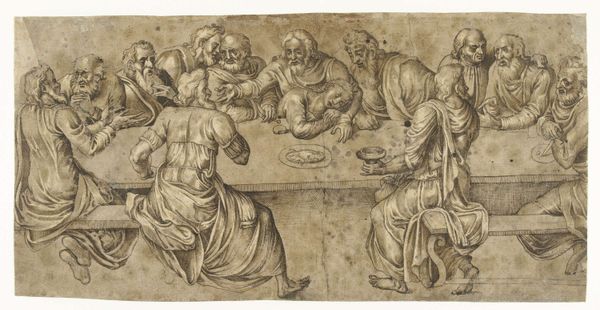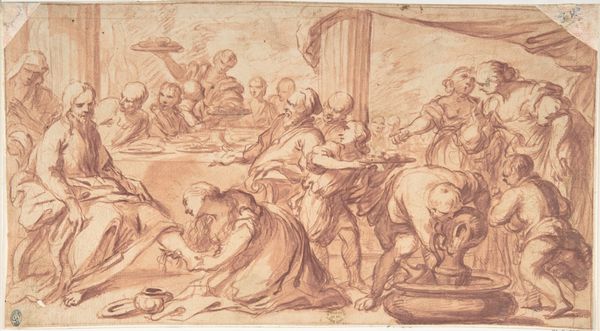
The Conspiracy of Julius Civilis and the Batavians in a Sacred Grove 1600 - 1613
0:00
0:00
painting, oil-paint
#
narrative-art
#
baroque
#
painting
#
oil-paint
#
painted
#
group-portraits
#
genre-painting
#
history-painting
Dimensions: height 38 cm, width 52 cm
Copyright: Rijks Museum: Open Domain
Editor: We're looking at "The Conspiracy of Julius Civilis and the Batavians in a Sacred Grove," an oil painting made between 1600 and 1613 by Otto van Veen. It's vast and busy, packed with people around a banquet table. I am intrigued by how opulent it is, down to every detail. What are your thoughts when you look at this piece? Curator: It strikes me as a constructed moment, deeply invested in its materials. Consider the canvas itself – the cost, the labour of stretching it. The oil paints, painstakingly created. How does this opulent display function within the socio-political landscape of the time? Van Veen here seems to portray the narrative almost as propaganda, celebrating an ancient history of revolt against Roman rule. Editor: Propaganda, really? How do you see that reflected in the materials and their usage? Curator: Look at the costuming. Those fabrics, the elaborate details. They aren't simply representing the past; they're elevating it, and imbuing it with contemporary significance, essentially using the *materials* to aggrandize an idea – revolt against perceived oppression by powerful rulers. Do you see it also in how this image might play in the dynamics of state power at that time? Editor: That’s fascinating, the painting isn't just representing history; it's actively *doing* something in the present. Curator: Exactly! Think of where this painting would have been displayed, who its intended audience was. The choice of materials – oil paint, canvas, pigment – weren't neutral, but instead contribute to its specific historical purpose of inciting shared emotion within a collective group. Editor: This has completely changed my perception of it. I was caught up in the narrative, but understanding the role of materials, labor, and even display practices, really opens it up. Curator: Indeed. Focusing on materiality offers valuable insight, prompting new appreciation for an artwork's construction and, perhaps most critically, social function.
Comments
rijksmuseum about 2 years ago
⋮
In 1613, the Dutch parliament (States General) commissioned Otto van Veen to paint twelve paintings depicting the revolt of the Batavians against the Romans in AD 69 and 70. These were displayed in Binnenhof, the central government building in The Hague. In the early years of the Dutch Republic, many compared their own revolt against Spain to the Batavian uprising.
Join the conversation
Join millions of artists and users on Artera today and experience the ultimate creative platform.
